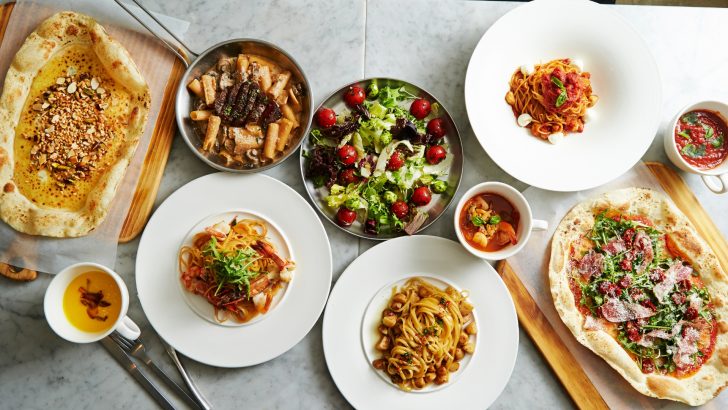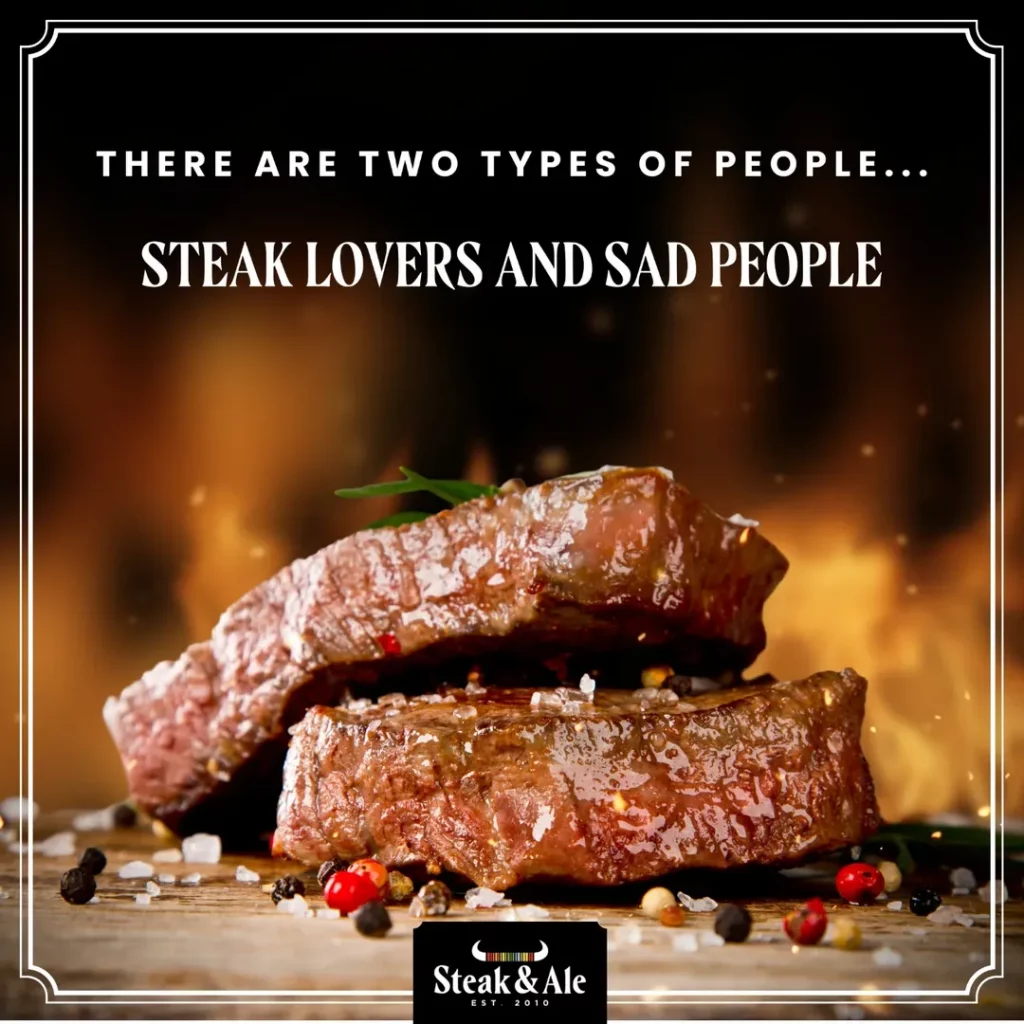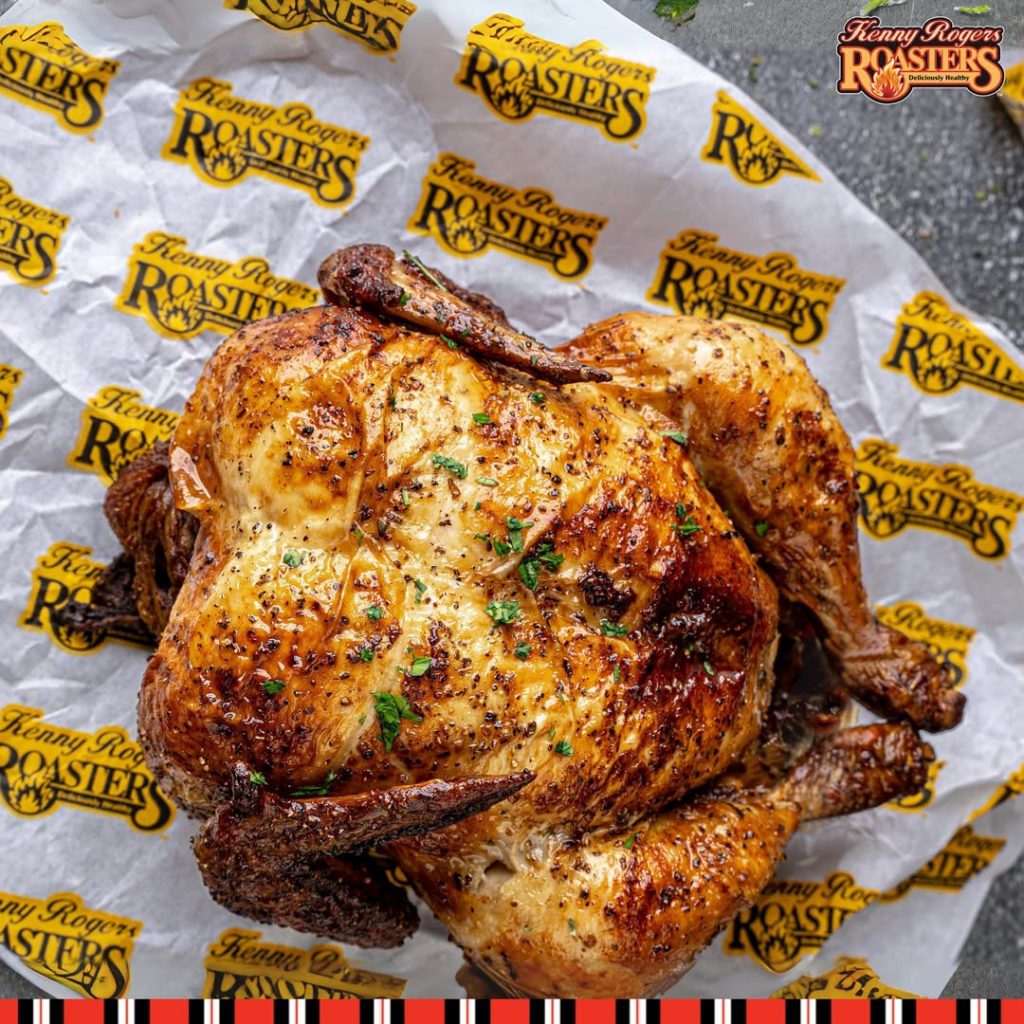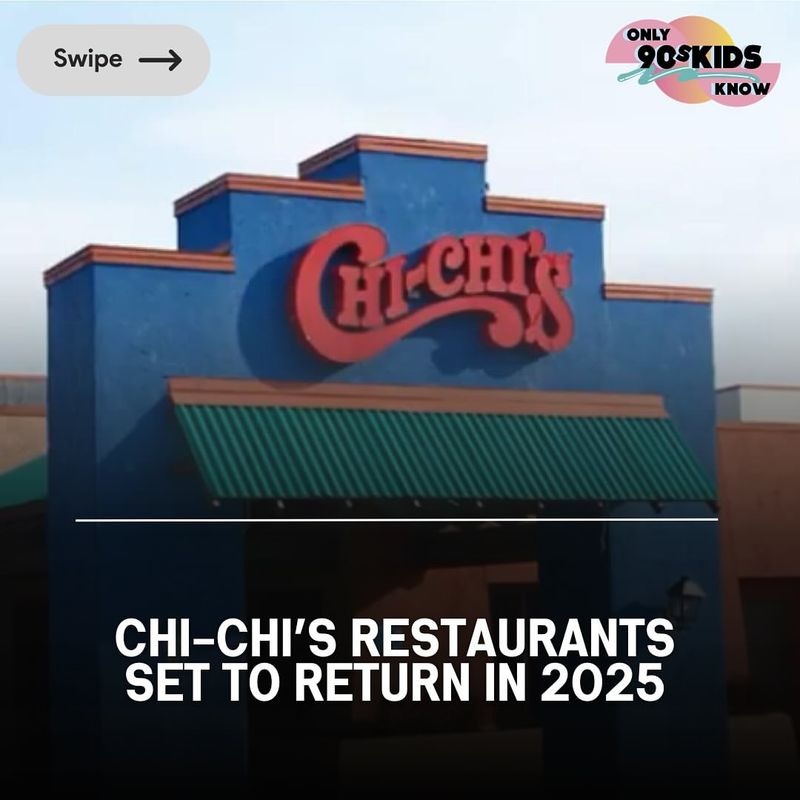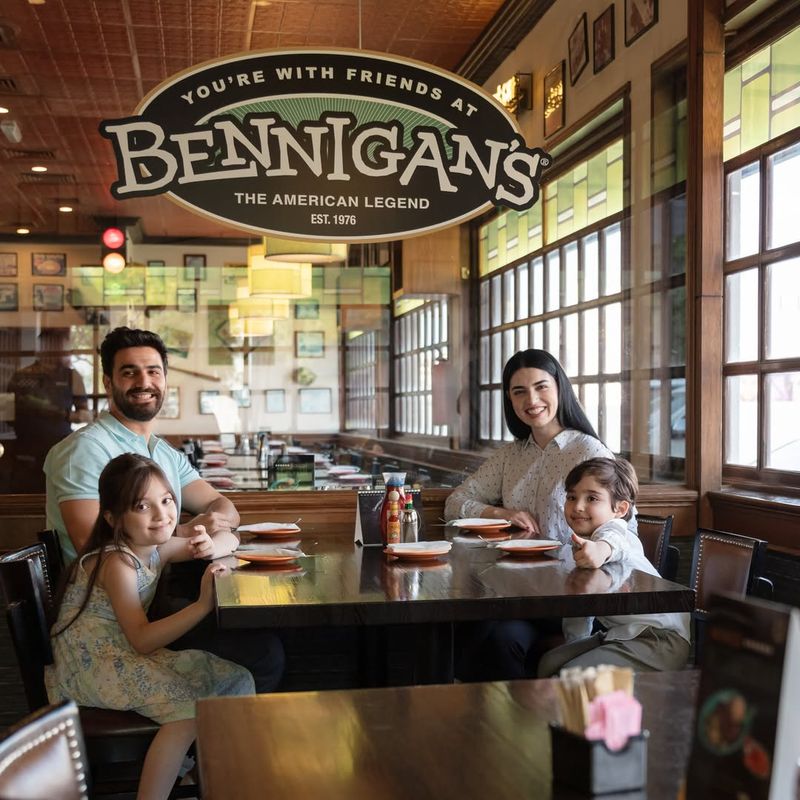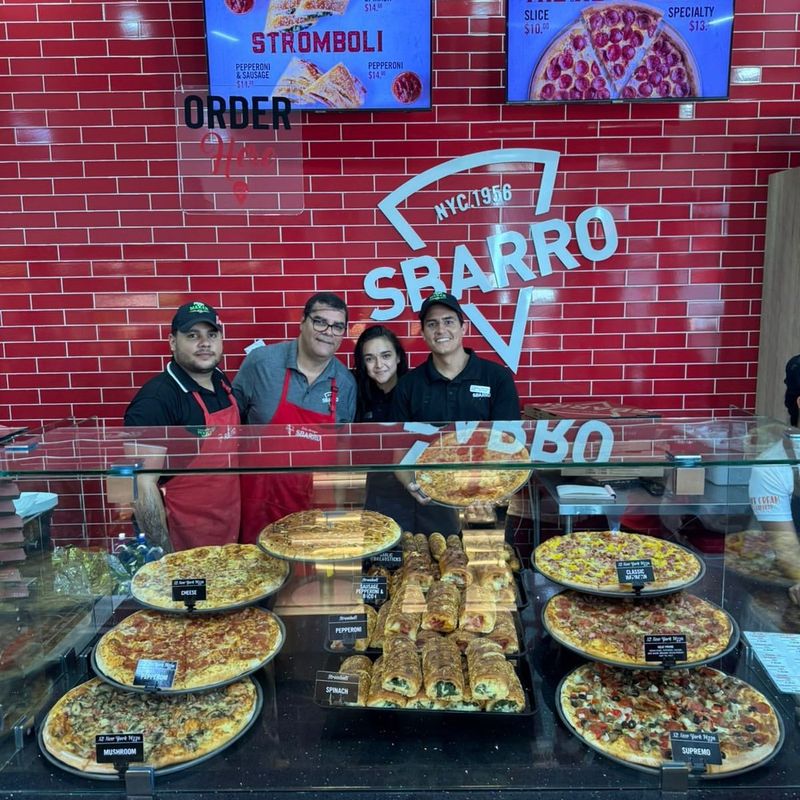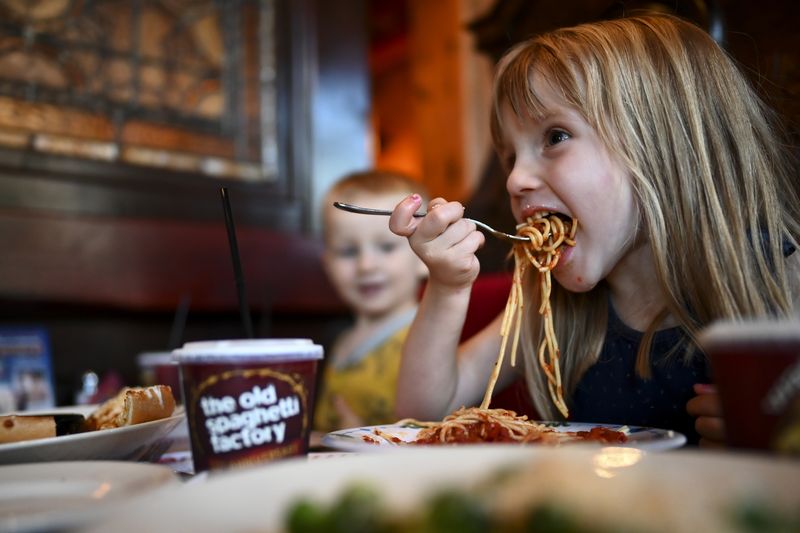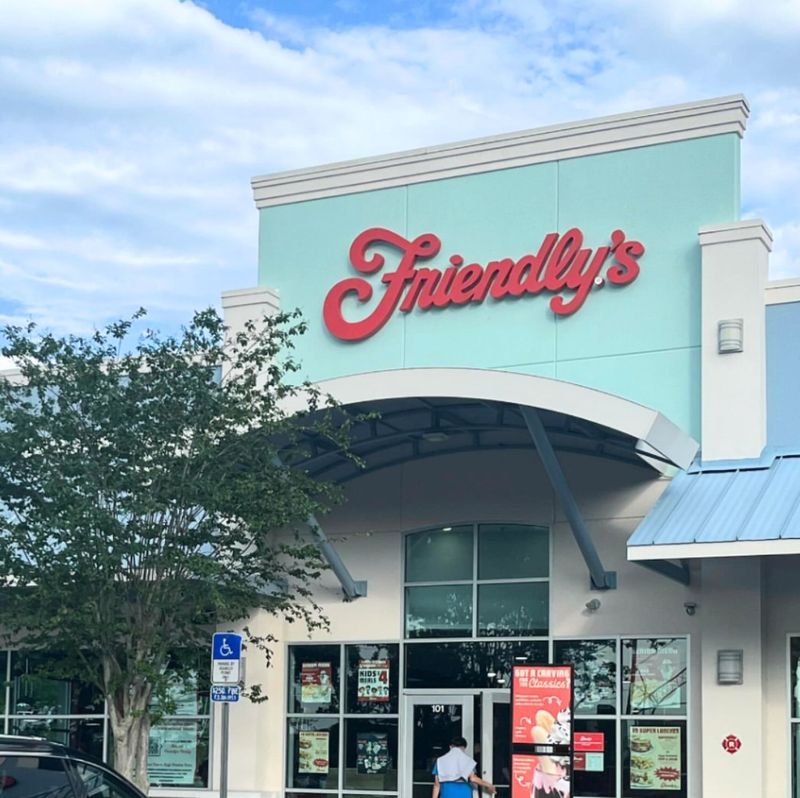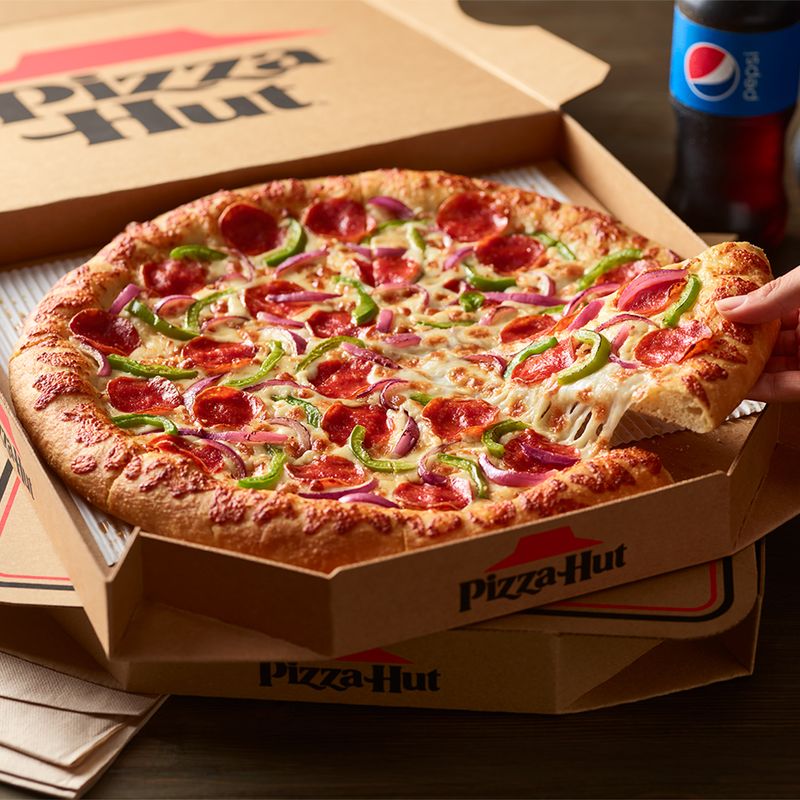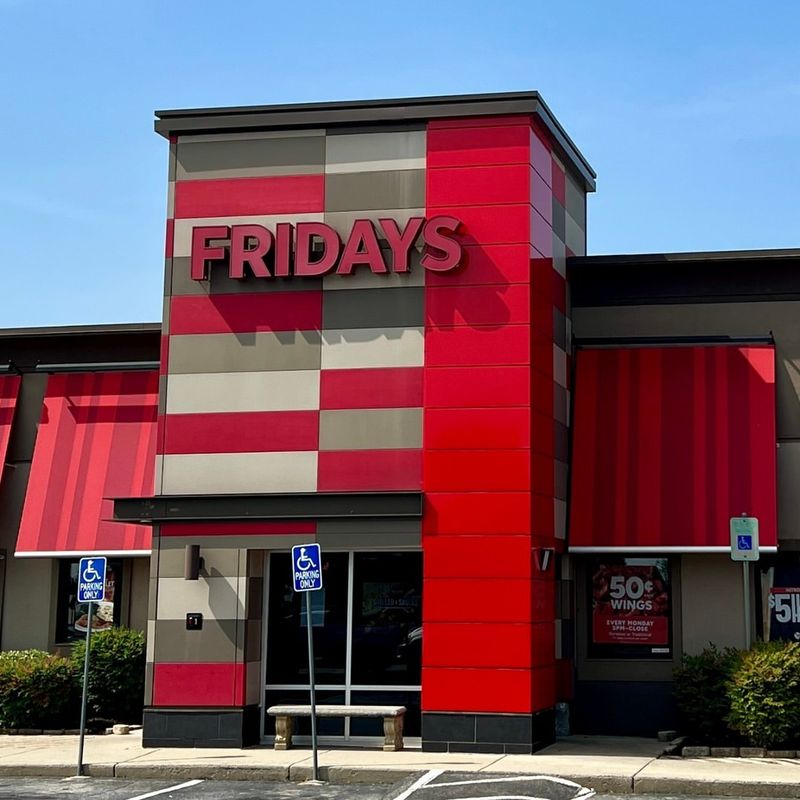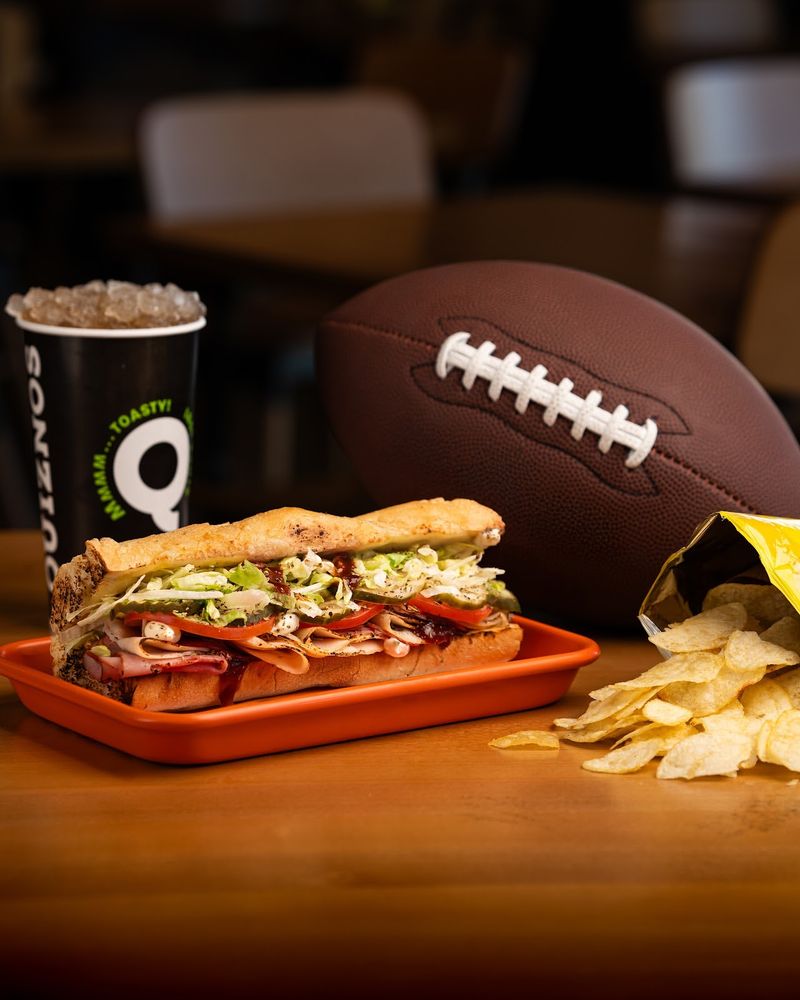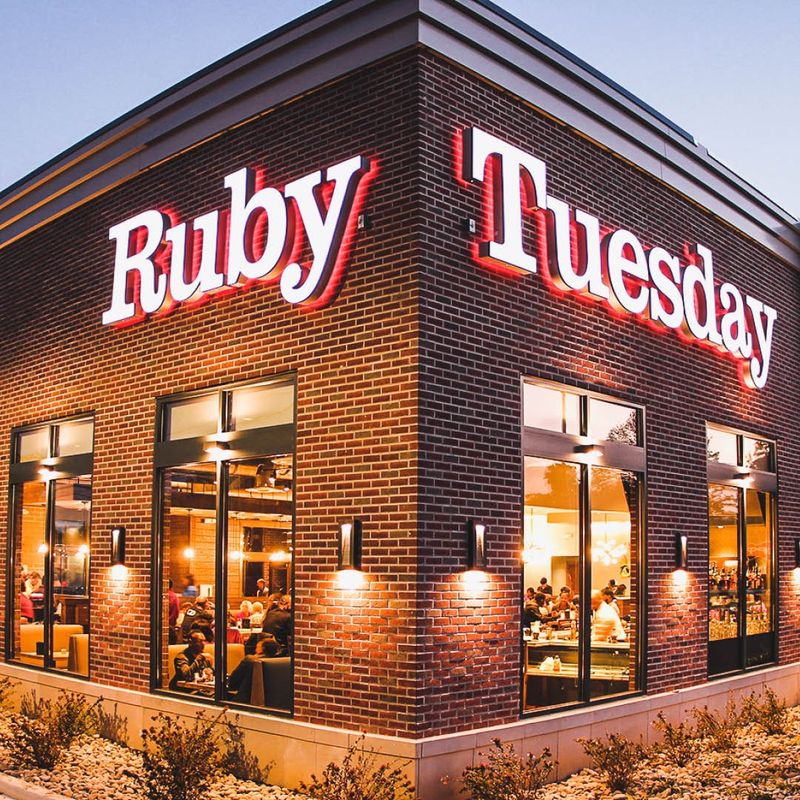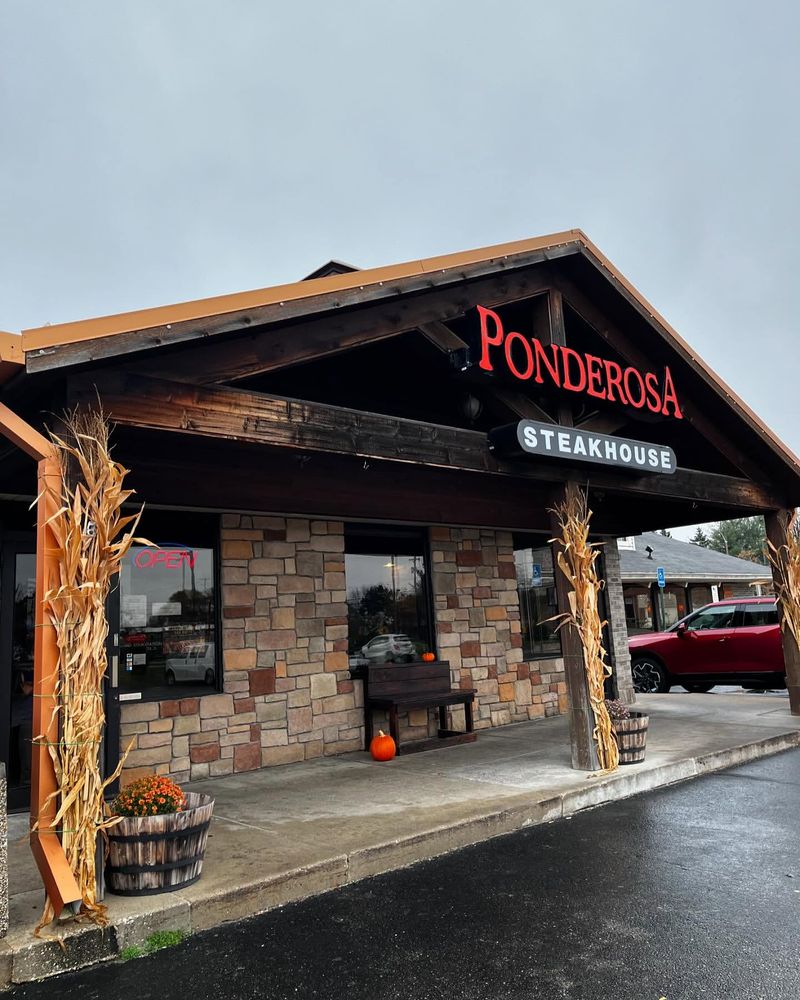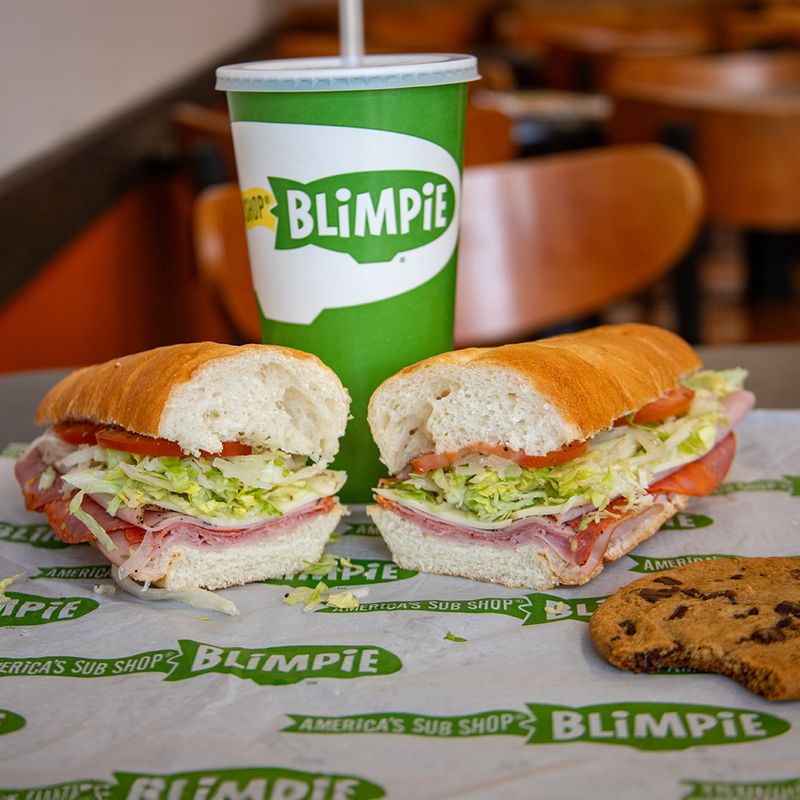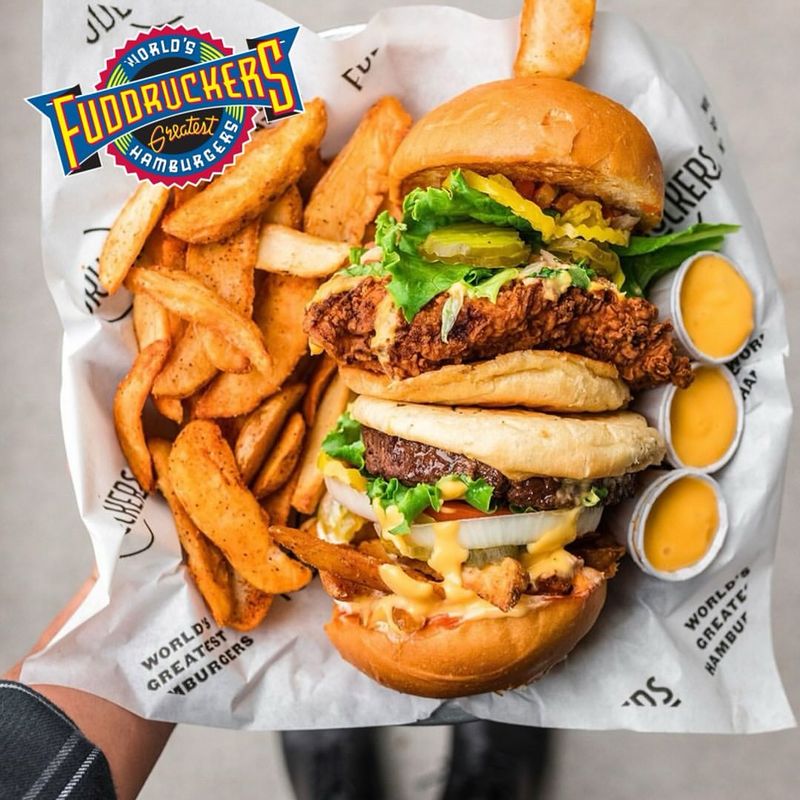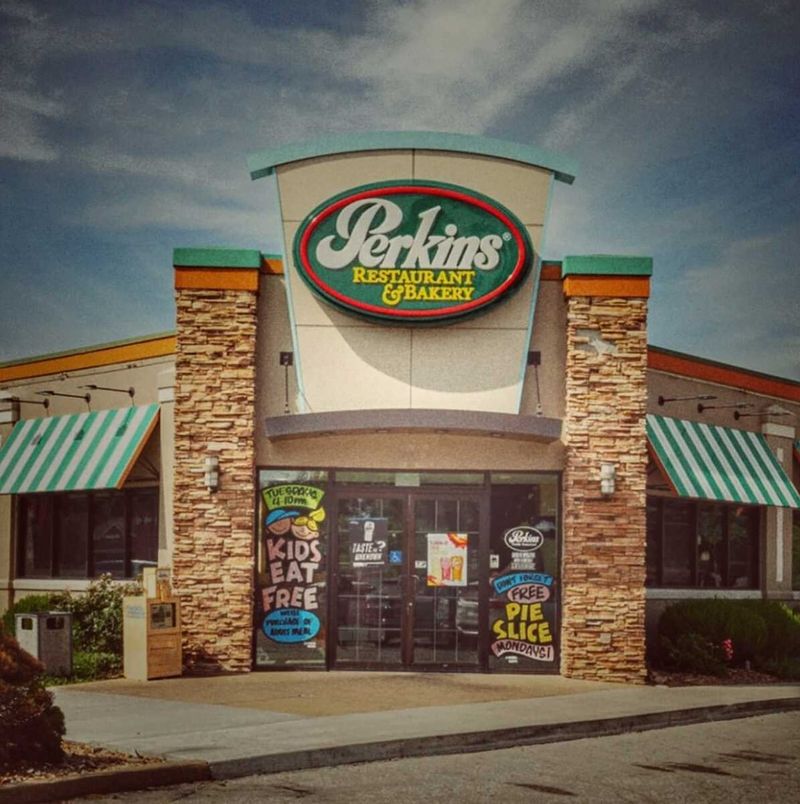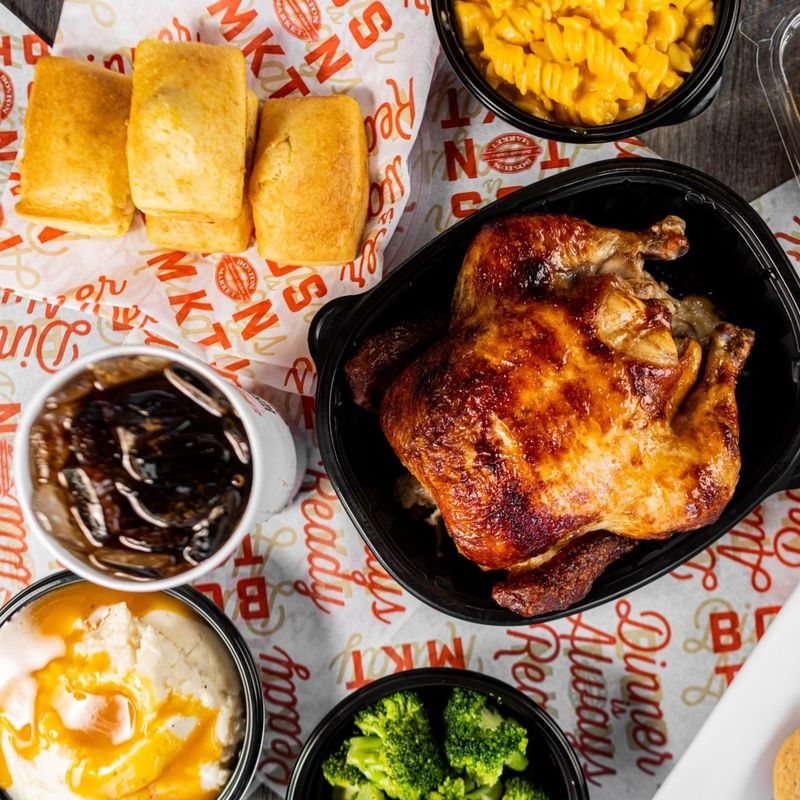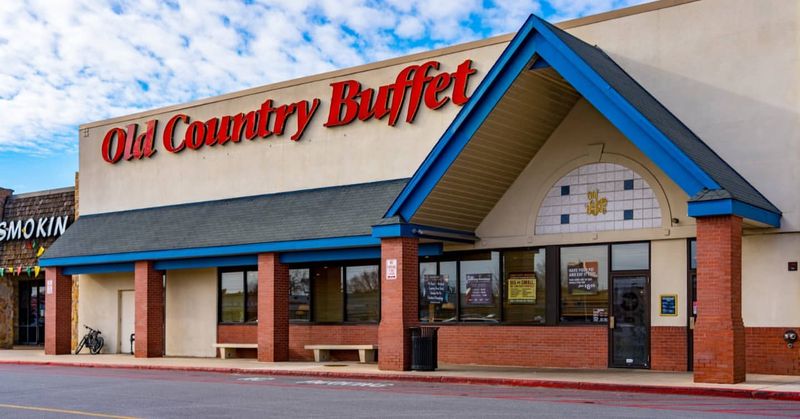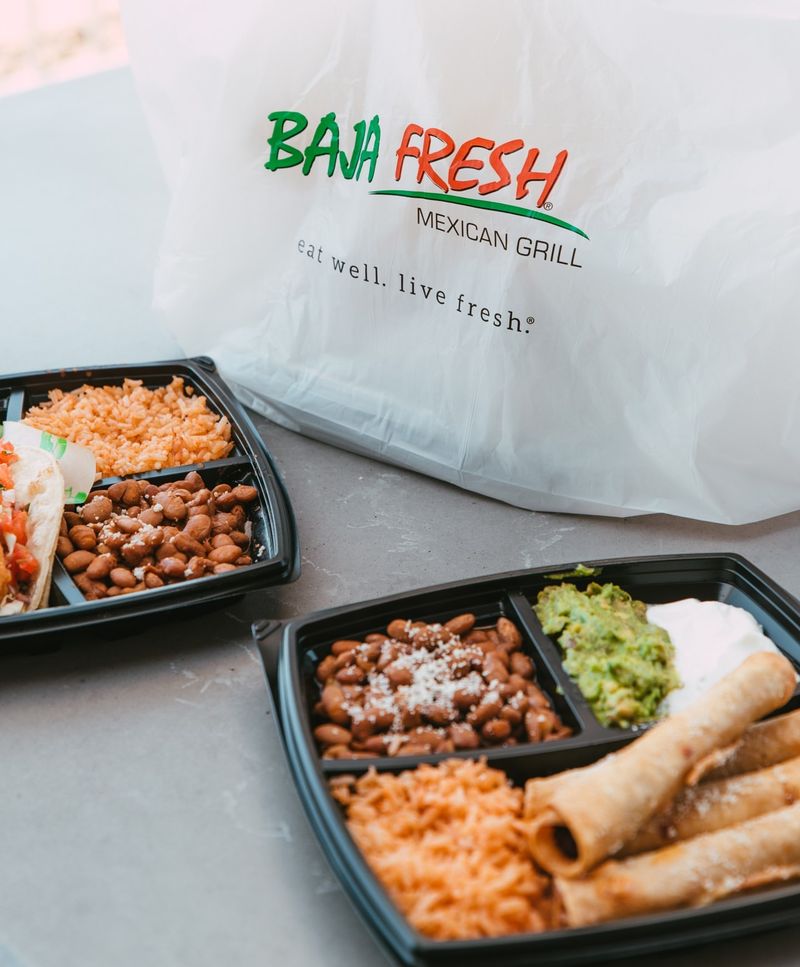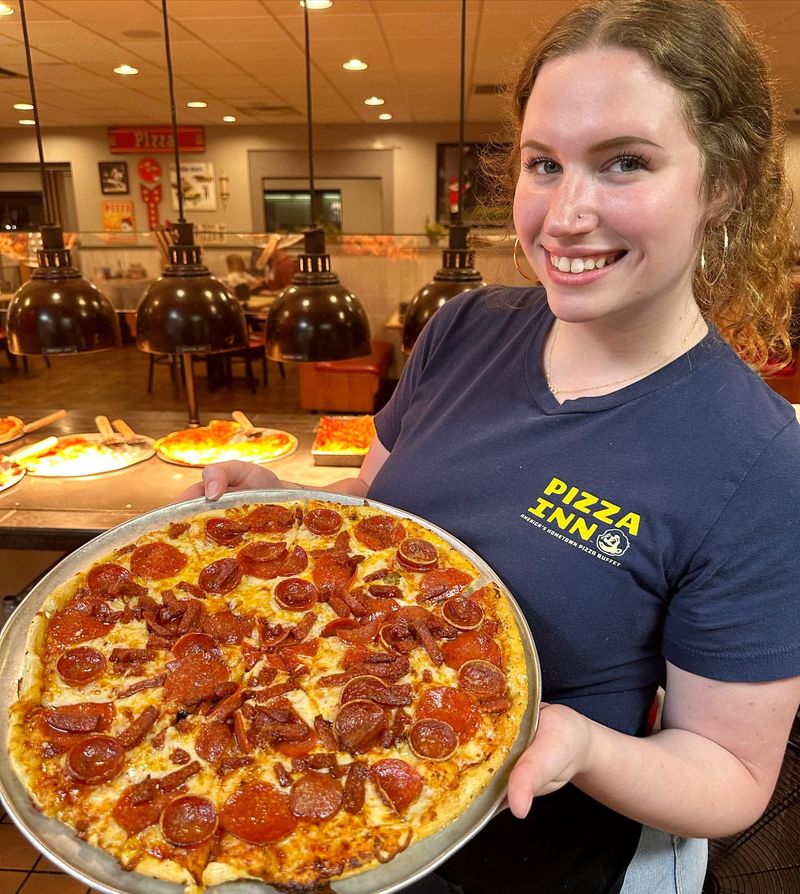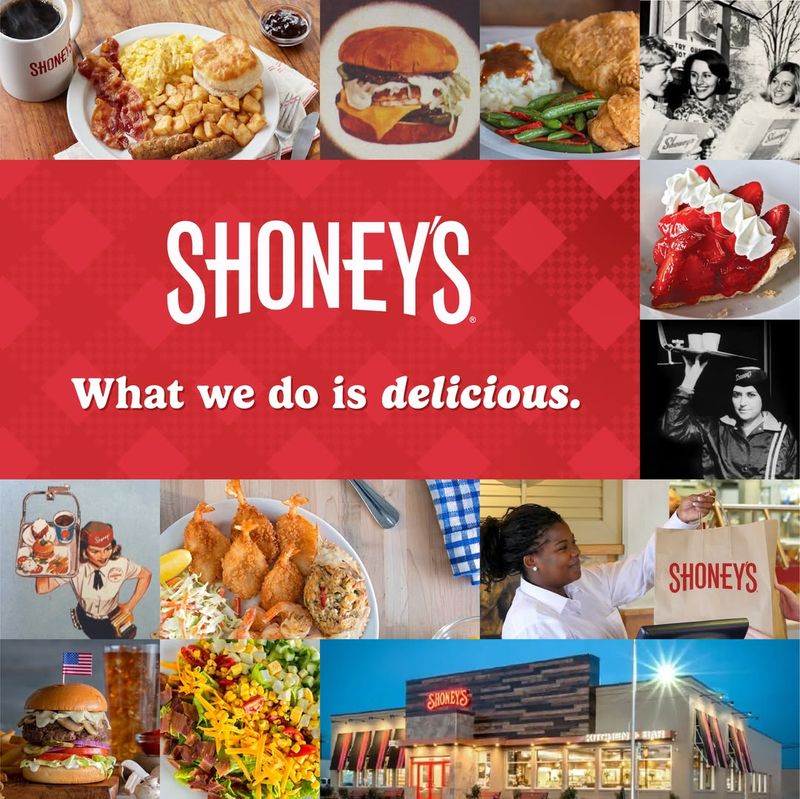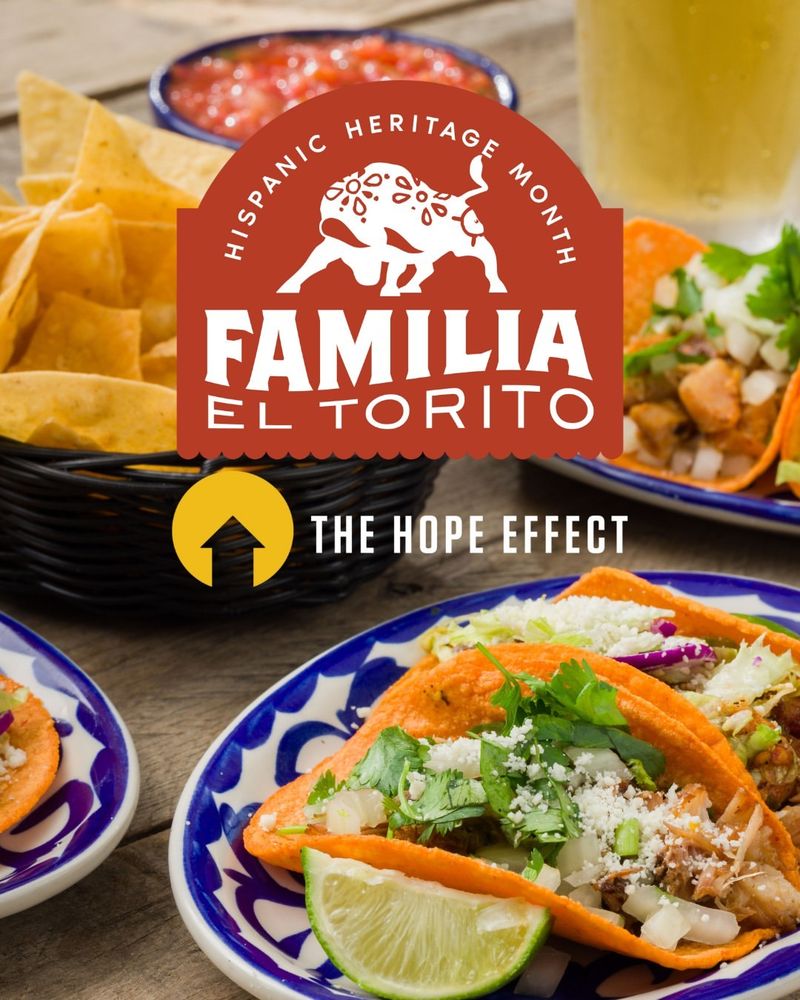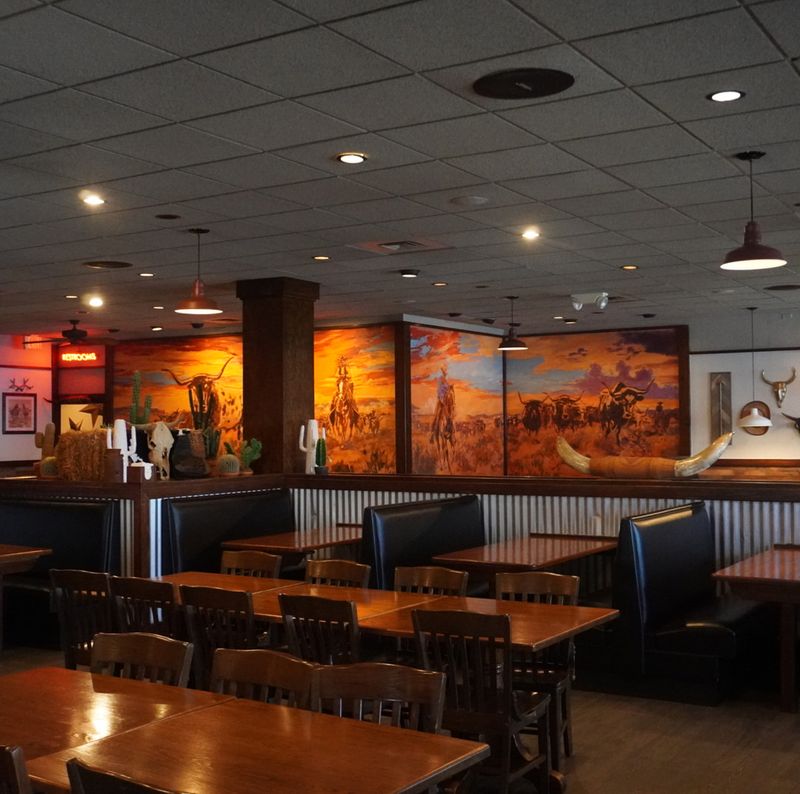Once upon a fry basket, these joints had us fooled—hook, line, and onion ring.
We lined up for rubbery ribs, microwaved pasta, and milkshakes that tasted like regret.
Looking back, it’s a miracle our taste buds survived the hype.
27. Steak And Ale
Steak and ale, once a pioneer in affordable upscale dining, charmed guests with its dim lighting and salad bar.
But as trends shifted toward lighter fare and open concepts, its dark, dated ambiance lost appeal. The menu, heavy on tradition, couldn’t keep up with evolving preferences.
What once felt like a night out now seemed like a step back in time, leading to its quiet fade from the steakhouse scene.
26. Kenny Rogers Roasters
Country music legend meets rotisserie chicken—what could go wrong? Kenny Rogers Roasters had a juicy start, drawing crowds with its slow-roasted birds and Southern sides.
But as fast-casual giants like Boston Market and Chick-fil-A sped ahead, the chain couldn’t hold a tune. High overhead, dated décor, and lukewarm marketing left it off-key.
Today, only a few locations linger overseas, singing a nostalgic swan song.
25. Chi-Chi’s
Long gone are the days when Chi-Chi’s salsa reigned supreme. Initially celebrated for its vibrant Mexican flair, the chain faced a downturn. Health concerns, particularly a hepatitis outbreak, marked its decline. Although the ambiance promised a fiesta, the taste didn’t always follow suit.
These missteps eventually led loyal patrons to seek authenticity elsewhere, leaving empty booths behind. Now, only nostalgic memories remain of what once was a festive dining hotspot.
24. Bennigan’s
Bennigan’s, with its Irish-American theme, once captured imaginations. Its menu, however, struggled to balance cultural expectations. Over time, offerings seemed outdated, failing to keep up with culinary trends.
As competitors innovated, Bennigan’s stood still, causing patrons to drift away. This stagnation, paired with financial woes, led to closures. What was once a lively pub experience, filled with laughter, slowly faded, leaving behind memories of better days.
23. Howard Johnson’s
Known for its iconic orange roof, Howard Johnson’s was synonymous with road trip dining. Yet, as the fast-food revolution surged, the chain lagged in adapting to quick service demands. Its classic menu, once a staple for travelers, became outdated.
Unable to compete with emerging giants, the vibrant roadside stop dimmed. Today, it’s remembered as a relic of a bygone era, symbolizing the nostalgia of mid-century journeys.
22. Sbarro
Sbarro aimed to bring New York-style pizza to the masses, nestled in bustling mall food courts. However, consistency issues plagued its reputation.
Over time, the once-popular grab-and-go option became synonymous with mediocrity. As foodies sought authentic experiences, Sbarro struggled to maintain relevance. The lack of innovation and evolving tastes led many to bypass its offerings, once a staple for hungry shoppers, now a fading memory.
21. The Old Spaghetti Factory
The Old Spaghetti Factory dazzled with its unique dining experience, yet its charm began to wane. Patrons, initially enthralled by the decor, found the menu uninspired.
As culinary tastes shifted, the chain failed to innovate, relying too heavily on nostalgia. This stagnation left diners craving more than vintage aesthetics, yearning for flavors as rich as the ambiance. In its prime, it was a whimsical escape; today, it’s a shadow of bygone indulgence.
20. Friendly’s
Friendly’s, once a beloved family dining spot, thrived on its ice cream and casual meals. Over time, service issues and dated decor clouded its reputation.
While the sundaes remained a highlight, the lack of menu innovation deterred diners seeking fresh options. The nostalgic charm, once a draw, couldn’t mask operational challenges. Today, it stands as a reminder of simpler times, overshadowed by modern eateries offering vibrant dining experiences.
19. Rainforest Cafe
Rainforest Cafe promised an adventure, dining amidst animatronic wildlife. Initially captivating, the novelty eventually wore thin. The menu, while themed, often fell short of flavor expectations. As diners prioritized substance over spectacle, the allure of dining in a faux jungle diminished.
Once a thrilling experience for families, it now struggles with relevance. Patrons today seek authentic culinary adventures, leaving the rainforest echoes in the past.
18. Country Buffet
Buffet dining once held a special allure, and Country Buffet was a leader in the field. Yet, the lack of quality control and uninspired selections led to its downfall. Patrons craved fresh, flavorful options, but encountered predictable, mass-produced fare.
As tastes evolved, the buffet model struggled, overshadowed by establishments prioritizing quality over quantity. The once-bustling dining halls now echo with memories of endless plates, lost in time.
17. Pizza Hut
Pizza Hut, once a pioneer in family dining, has faced challenges. Its dine-in experience, once a draw, became secondary to delivery and takeout. While the pan pizza remains iconic, the chain struggled to innovate amidst growing competition.
As artisanal and local pizzerias flourished, Pizza Hut’s charm faded. The nostalgic red roof, a symbol of countless gatherings, now stands as a testament to changing dining preferences and unfulfilled potential.
16. TGI Fridays
TGI Fridays, synonymous with casual fun, faced a decline as tastes evolved. What was once a novelty, with flair-covered waitstaff and lively ambiance, became dated.
Struggling to reinvent itself, the chain watched as diners flocked to more contemporary options. The familiar striped awnings, once inviting, now signal a bygone era overshadowed by eateries that adapt and innovate, leaving behind the Fridays of yesterday’s social scene.
15. Quiznos
Quiznos dared to toast, but the heat of competition proved too much. Initially a game-changer with its warm subs, inconsistent quality and pricing issues led to its decline. As fresh, local sandwich shops emerged, Quiznos failed to adapt.
The allure of toasted delights waned, with operations shrinking dramatically. Today, the once-popular lunch destination echoes with lessons in market adaptation, overshadowed by more agile culinary innovators.
14. Ruby Tuesday
Ruby Tuesday, famed for its salad bar, once boasted varied American cuisine. However, failing to maintain menu excitement and ambiance updates led to its decline. As dining preferences shifted, the chain found itself outdated.
The once-iconic salad bar, a hallmark of health-conscious dining, became insufficient amidst evolving tastes. Ruby Tuesday now stands as a reminder of the need for continuous innovation in the ever-changing dining landscape.
13. Ponderosa Steakhouse
Once a family favorite for steak dinners, Ponderosa Steakhouse struggled with changing preferences. The chain’s formula, appealing in simpler times, became predictable. As diners sought gourmet experiences, Ponderosa’s offerings remained static.
Coupled with operational challenges, it couldn’t compete with evolving market demands. The once-bustling dining rooms now echo with memories of hearty meals shared in a bygone era, overshadowed by modern steakhouses.
12. Blimpie
Blimpie, once a prominent deli option, faced stiff competition from fresher, more innovative sandwich chains. Its classic subs, while nostalgic, lacked the modern appeal diners craved. As tastes shifted towards artisanal and fresh ingredients, Blimpie remained rooted in the past.
The familiar deli counter, once a lunchtime staple, now stands as a relic of a simpler sandwich era, overshadowed by healthier, trendier options.
11. Fuddruckers
Once thrilling patrons with its build-your-own-burger concept, Fuddruckers struggled as gourmet burger joints emerged. The chain, falling behind in a competitive market, faced issues with consistency and innovation. Fuddruckers, once a bustling burger haven, watched as diners gravitated toward fresher, more daring options.
Now, the DIY allure echoes with memories of indulgent meals, overshadowed by the creativity of modern burger craftsmen.
10. Perkins
Perkins, once a go-to spot for hearty meals and homemade baked goods, struggled as fast-casual dining rose in popularity. While its menu offered nostalgic comfort, it lacked the innovation needed to keep up. As health-conscious dining became more prevalent, Perkins’ classic offerings felt outdated.
The friendly diner atmosphere that once drew in crowds couldn’t compete with modern eateries prioritizing freshness and speed. Today, it serves as a reminder of the difficulty in balancing tradition with shifting consumer preferences.
9. Boston Market
Boston Market, once popular for its rotisserie chicken, grappled with a changing market. The appeal of homestyle meals waned as diners sought fresher, more varied options. Struggling to keep up with culinary trends, the chain faced dwindling interest.
Its traditional comfort food, while heartwarming, couldn’t compete with innovative offerings from rivals. Today, Boston Market serves as a lesson in adapting to the evolving palates of the dining public.
8. Old Country Buffet
Old Country Buffet, a leader in the buffet-style dining, lost favor as tastes evolved. The promise of unlimited choices was overshadowed by a lack of quality and creativity.
Diners began craving experiences beyond predictable offerings. As the food landscape shifted towards quality, Old Country Buffet’s model became obsolete. Once a go-to family spot, it now stands as a testament to the importance of innovation and quality in dining.
7. Baja Fresh
Promising fresh Mexican flavors, Baja Fresh struggled amid fierce competition. While the concept of freshness was appealing, the execution faltered. As authentic Mexican taquerias rose in popularity, Baja Fresh failed to innovate quickly enough.
What was once enticing now felt stale compared to the vibrant alternatives. It stands as a reminder of the difficulty in staying relevant in a fast-paced culinary world, overshadowed by true innovators in Mexican cuisine.
6. A&W Restaurants
Famed for its root beer and drive-in nostalgia, A&W Restaurants faced modern challenges as tastes shifted toward gourmet and health-focused options. Its menu struggled to adapt, and the charm of roller-skate service couldn’t keep up with evolving preferences.
Once a symbol of Americana, A&W now stands as a nostalgic memory, overshadowed by eateries that blend tradition with contemporary dining trends.
5. Pizza Inn
Offering a buffet-style experience, Pizza Inn once attracted families seeking variety. However, as culinary tastes grew more sophisticated, the chain’s offerings started to feel lackluster.
Struggling to maintain quality amidst fierce competition, Pizza Inn’s appeal gradually waned. The once-bustling dining halls, filled with laughter and endless pizza slices, now echo with memories of simpler times. It remains today as a relic of buffet dining’s past allure.
4. Shoney’s
A staple for Southern comfort food, Shoney’s faced decline as tastes shifted. Known for its breakfast buffet and family-friendly atmosphere, it struggled to keep up with modern culinary trends. The appeal of its traditional offerings faded as diners sought fresher, more diverse options.
A bustling hub for hearty meals, Shoney’s now serves as a reminder of the importance of adaptability in an ever-evolving dining landscape.
3. El Torito
El Torito, once a pioneer in casual Mexican dining, struggled as authentic alternatives emerged. While it introduced many to Mexican cuisine, its offerings failed to evolve with changing tastes.
The chain’s vibrant ambiance became dated, and as diners sought genuine flavors, El Torito’s appeal dwindled. It now serves as a lesson in the importance of authenticity and innovation, overshadowed by eateries delivering true Mexican experiences.
2. Roy Rogers
Roy Rogers, known for its roast beef sandwiches and fixin’s bar, faced decline amidst fierce competition. As fast-casual dining evolved, the chain struggled to keep pace. Patrons, seeking fresher, more diverse options, began to overlook its offerings.
The nostalgic Western theme, once a draw, now feels out of step with contemporary dining trends. Roy Rogers remains a memory of simpler fast-food times, overshadowed by modern innovators.
1. Lone Star Steakhouse
Known for its Texan flair, Lone Star Steakhouse struggled as dining tastes evolved. The charm of its themed decor couldn’t hide a lack of menu innovation. As steakhouses embraced gourmet trends, Lone Star remained static.
The allure of hearty meals in a Western setting faded, leading to closures. It now stands as a testament to the necessity of evolution in the competitive world of dining. Its failure to adapt highlights the importance of staying ahead in an ever-changing food landscape.

